Inscriptions, 1001-13, 2001-3
Numbers from 1001 on indicate texts which cannot
be assigned definitely to a particular king, but whose dating and
belonging to a ruler can be uggested (texts which cannot
be identified at all are to be found in the Unidentified Fragments page).
Texts numbered from 2001 on are not royal inscriptions, but
inscriptions of private nature -
like, for example, a servant seal or an officer stela - which give
information relevant for establishing royal names and titles.
Browse the RIAo Corpus [http://oracc.museum.upenn.edu/riao/pager/]
1001 1002 1003 1004 1005 1006 1007 1008 1009 1010 1011 1012 1013 2001 2002 2003
1001
A piece of clay tablet of unknown provenance is inscribed with a passage of Neo-Assyrian annals. Format, script, literary style and content suggest a dating in the ninth century BC. Prime candidates to date more precisely the text seem to be Aššurnaṣirpal II or Shalmaneser III, but Šamši-Adad can also be taken into consideration.
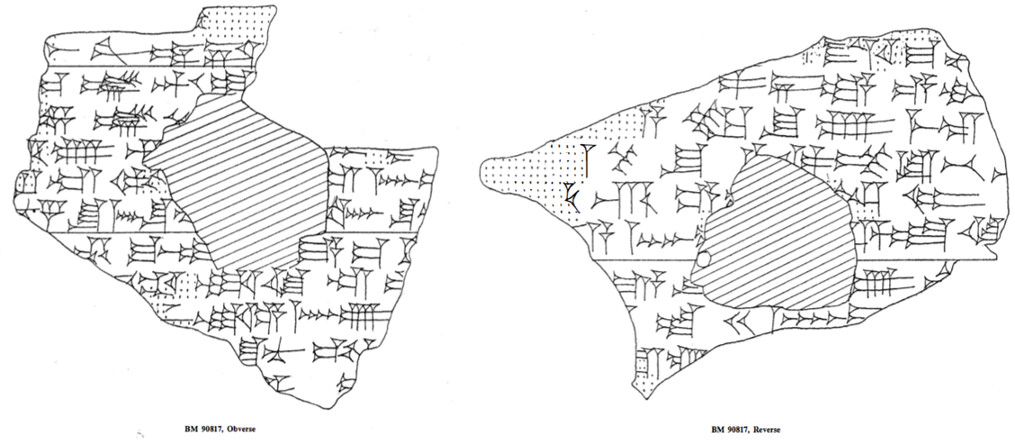
BM 090817. ARRIM 9 pp. 24-5
The obverse shows events from the first two years of reign of the celebrated ruler. The reverse has remains of a building inscription and a curse section.
Access the composite text [http://oracc.museum.upenn.edu/riao/Q004722/] of Shalmaneser III 1001.
Bibliography
1002
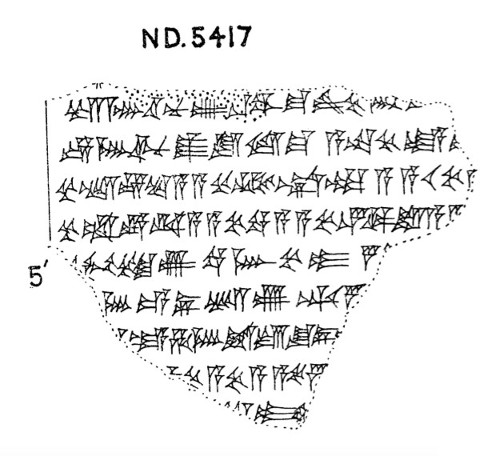
ND 05417. Wiseman, Iraq 26 pl. XXVI
The present fragmentary clay tablet bears a piece of royal annals that seems reasonable ascribing to Shalmaneser III, especially on the basis of the place names and their orthography that very much resemble those in the ruler's inscriptions. In particular, one notes that ll. 3'-4' are similar to those mentioned in a version of the king's sixteenth regnal year (843 BC; see, text no. 6 iii 58-iv 25).
Access the composite text [http://oracc.museum.upenn.edu/riao/Q004723/] of Shalmaneser III 1002.
Bibliography
1003
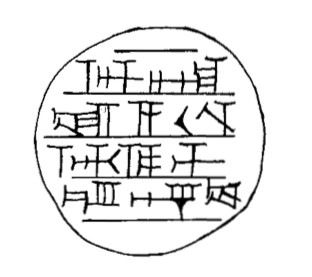
BM 089907. ARRIM 5 pp. 11-20 no. 9
A dark green (onyx) "eye-stone" of unknown provenance bears a dedication to a deity called Ḫallasua otherwise unattested, although Deller has suggested that there would be a relationship with the Hurrian name of the source of the Tigris. Such possibility would then give room for a dating of the object to the years of Shalmaneser III, in whose inscriptions the sources of the Tigris play a great role. However, the inscription might as well be dated to Shalamaneser I.
Access the composite text [http://oracc.museum.upenn.edu/riao/Q004724/] of Shalmaneser III 1003.
Bibliography
1004
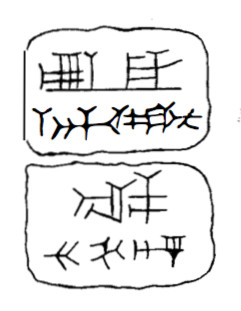
BM 089281. ARRIM 5 pp. 11-20 no. 10
A small dark-green gem of unknown provenance is engraved with the following text, which could of course belong to Shalmaneser I as well.
Access the composite text [http://oracc.museum.upenn.edu/riao/Q004725/] of Shalmaneser III 1004.
Bibliography
1005
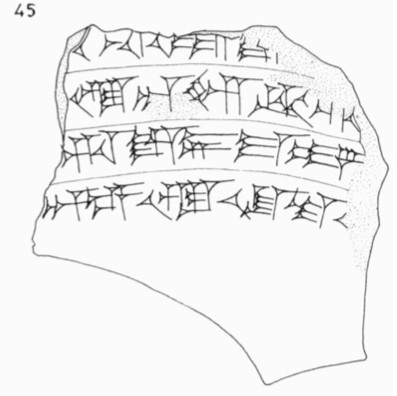
HW 45. Black, Iraq 51 p. 45 no. 45.
A fragment of a clay cone found at Tell al-Hawa (HW 45) is inscribed with a piece of writing that could be a Shalmaneser III's text, like some others discovered in the same area (e.g., see text no. 41).
Access the composite text [http://oracc.museum.upenn.edu/riao/Q004726/] of Shalmaneser III 1005.
Bibliography
1006
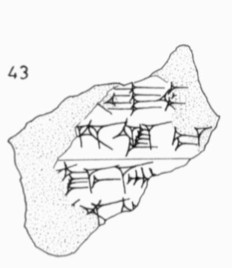
HW 43. Black, Iraq 51 p. 45 no. 43.
A tiny fragment from a bit of clay cone discoevered at Tell al-Hawa has an inscritpion too short to warrant an edition. Similar clay cone fragments have ben found in great nubmer at the site, and many of them are dated to Shalmaneser III (see, text no. 41))
Bibliography
1007
On the photo Ass ph 4795, a fragmentary object is visible with the
inscription [... tukultī]-⸢dMAŠ MAN
kiš-šá-te [...], "[... Tukultī]-Ninurta, king of the
Universe." The presence of the word kiššati written
syllabically seems to indicate that the text should be dated to
Shalmaneser III, only ruler in whose inscriptions appear such
possiblity in the titles.
No edition of this text is present here.
Bibliography
1008
A stone slab found at Nineveh has a small chip on the right edge with a text too fragmentary to warrant an edition. Borger suggested to read in line 8: [... anum-ḫi-ir]- bi zaq-pu on analogy with text no. 2 ii 10, and therefore indicated Shalamneser III as probable date of the text. However, nothing else in the traces corresponds to the passage in text no. 2 or any other narrative of Shalmaneser's first campaign.
Bibliography
1009
The name of Imgur-Enlil (Balawat) is visible on a piece of wall plaque
that is said to have been discovered in that same city. The particular
interest of Shalmaneser III for the city could be a dating
factor.
No edition of this text is presented here.
Bibliography
1010
A fragmentary text no a surface flake of a tablet from Nineveh is not enough preserved to warrant an edition, but seems to concern Shalmaneser III, although it is not necessarily a royal inscription. A mention of a gold necklace (GÚ.KÙ.GI) is present at line 6'. to
Bibliography
1011
A small piece of stone in the British Museum, probably from a statue, bears a Neo-Assyrian script that seems to be dated to Shalmaneser III. The broken part abvove the first line seems not to have been inscribed.
Access the composite text [http://oracc.museum.upenn.edu/riao/Q004732/] of Shalmaneser III 1011.
Bibliography
1012
A flake of stone (13.5x3.5+ cm) in the British Museum has faint, illegible traces within several ruling lines.
Bibliography
1013
A stone fragment from British Museum has faint, illegible traces within ruling lines.
Access the composite text [http://oracc.museum.upenn.edu/riao/Q004734/] of Shalmaneser III 1013.
Bibliography
2001
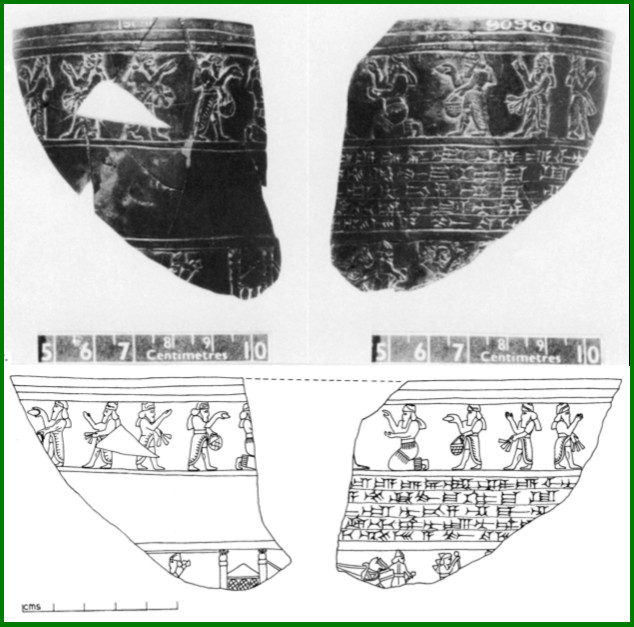
BM 090960: Elaboration from: Curtis and Grayson, Iraq 44 p. 94 and pl. III.
A stone vase fragment discovered at Tarbiṣu (Sherif Khan) is engraved with a dedication to Nergal, the city's patron diety, given by the Assyrian turtānu Bēl-lūballiṭ. He was eponym in 814 BC, a fact that could date the object to the reign of Šamšī-Adad V. However, similar dedicatory texts from Tarbiṣu are clearly dated to the reign of his father Shalmaneser III (see also text no. 2002 and Adad-nerari III text no. 2012).
Access the composite text [http://oracc.museum.upenn.edu/riao/Q004735/] of Shalmaneser III 2001.
Bibliography
2002
A stele found among the row of steles at Ashur has an inscription that records the turtānu Bēl-lūballi (see text no. 2001), with a elaborate titulary which is also attested for Šamšī-ilu (see Adad-nerari III text no. 2010).
Access the composite text [http://oracc.museum.upenn.edu/riao/Q004736/] of Shalmaneser III 2002.
Bibliography
2003

YBC 07058 (SAA S 2 pp. ii)
A clay cube which, as the inscription on it idicates, is a die for casting lots for an eponym, which belonged to Iaḫalu, an official of Shalmaneser III, who also held the office of eponym himself twice (833 and 824 BC) during Shalmasneser's reign.
Access the composite text [http://oracc.museum.upenn.edu/riao/Q004737/] of Shalmaneser III 2003.
Bibliography
Nathan Morello
Nathan Morello, 'Inscriptions, 1001-13, 2001-3', The Royal Inscriptions of Assyria online (RIAo) Project, The RIAo Project, a sub-project of MOCCI, 2020 [http://oracc.museum.upenn.edu/riao/theassyrianempire883745bc/shalmaneseriii/texts10012003/]